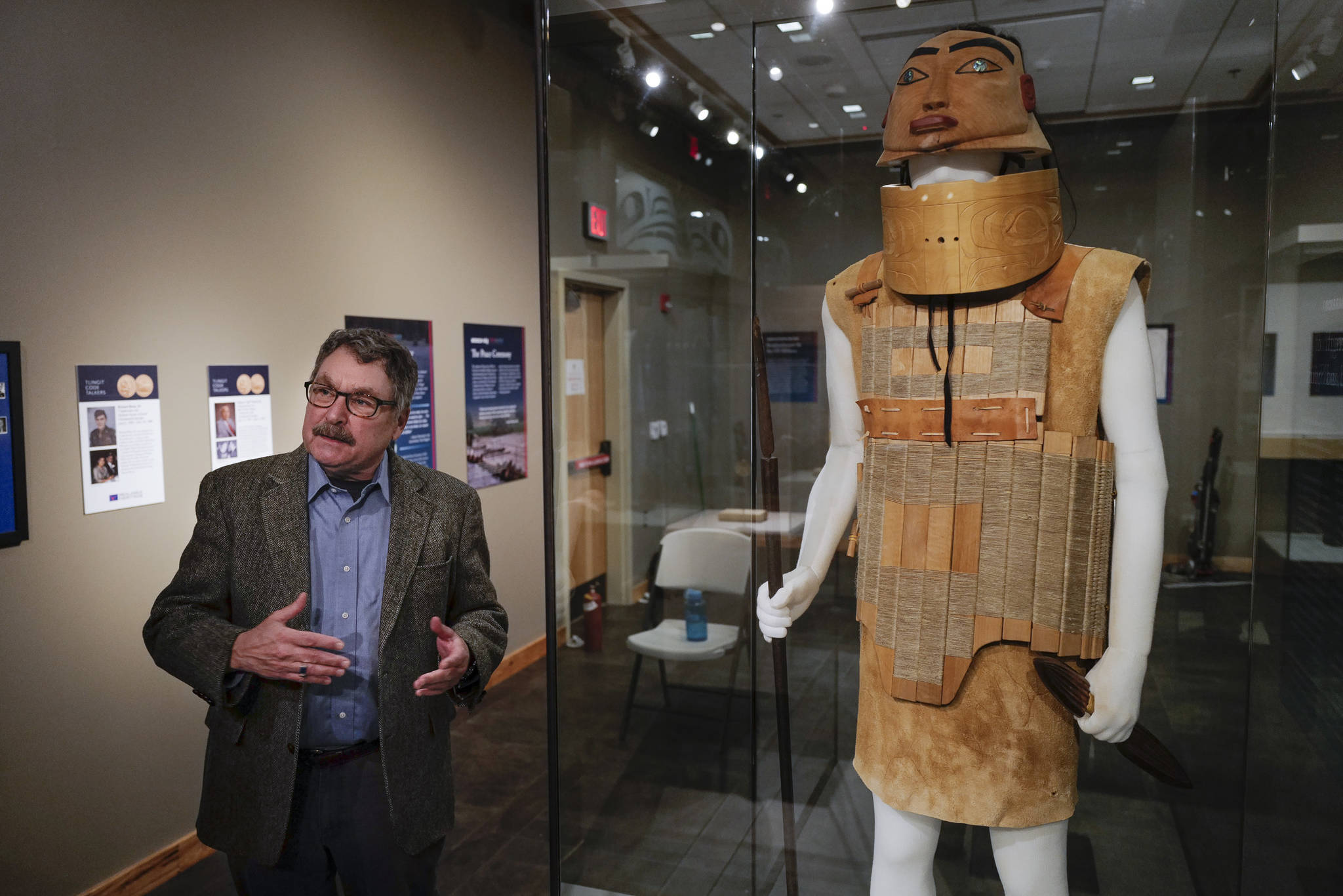The Sealaska Heritage Institute unveiled its newest exhibit, War and Peace, Friday for Gallery Walk.
“The Tlingit word for war was also the Tlingit word for law,” said Chuck Smythe, the history and culture director for the SHI.
Both the Russians and, later, the Americans would come to know the inhabitants of Southeast Alaska as fierce warriors, Smythe said, though that didn’t stop either from bringing violence to the Alaska Native tribes for slights both real and perceived.
The Tlingit had a highly developed sense of property law, Smythe said. Based on responsibility for indemnities intentional or not, clans would seek redress for injuries, losses, thefts or deaths caused by other clans or groups. This was the root of a number of one-sided incidents where the American military jumped straight to blunt force, lashing out and bombarding, at various times, Wrangell, Kake and Angoon.
“They can all be traced to conflicts between the legal system,” Smythe said. “Basically, it was a life for a life.”
Rosita Worl, president of the SHI, wrote that the difference between the individualist western laws and collective laws of the Tlingit were frequently at odds. When negligence caused the death of a Tlingit shaman, Teel’ Tlein, in a whaling accident, members of his clan sought reparations from the company in the form of 200 blankets, Worl writes, taking two white employees into custody.
In response, U.S. Navy Cmdr. Edgar Merriman took the Revenue Service Cutter Thomas Corwin and a company of Marines. Demanding 400 blankets in tribute from the Tlingit, Merriman opened fire when his demands were not met, levelling the village. The U.S. Navy has still failed to apologize for the attack, Worl writes, and several attempts by the Tlingit to redress the wrong have gone rebuffed.
“It’s still remembered and still part of history, and the wrong has not been righted,” Smythe said. “It would start with an apology and a negotiation.”
SHI will also be showing the film “Haa Shagoon,” which shows the peace ceremony elders of the Tlingit attempted to perform along the Chilkoot River in 1980 to seek redress for the interruption of a salmon breeding river, the disruption of a burial site and the demolition of a landmark marking a neutral ground for peace negotiations. The U.S. government declined to sit down at the table, and the grievance still exists.
Many of the artifacts in the exhibit are examples of clothing or other signifiers of shaming for grievances inflicted on the Tlingit people, including naval uniforms and military headwear, Smythe said. The exhibit also shows original or replica weapons and armor carried into battle by the Tlingit in their wars, both between the clans and against the Russians in the Battle of Sitka.
“They were made to look ferocious, to inspire fear,” Smythe said of the war helmets and collars.
Tlingit clans had to be careful when prosecuting war not to attack those they had no grievance with, Smythe said, often closing to verify that the enemies at hand were the ones they sought before retreating to gather themselves and then attacking in earnest. Tlingit preferred to fight at close range, Smythe said, with daggers tied to their arms and spears.
Many of the artifacts, including some of the uniforms, were donated or loaned to the museum by the families who took them in the first place, Smythe said.
The museum also honors the five Tlingit code talkers, who served honorably in WWII. Doing for the Army what the perhaps better-known Navajo code talkers would do for the Marines, the Tlingit code talkers would use their native language against Japanese forces in the Pacific. They were not recognized for their service in life, but have since been honored by the SHI and the Alaska Legislature.
• Contact reporter Michael S. Lockett at 757-621-1197 or mlockett@juneauempire.com.

